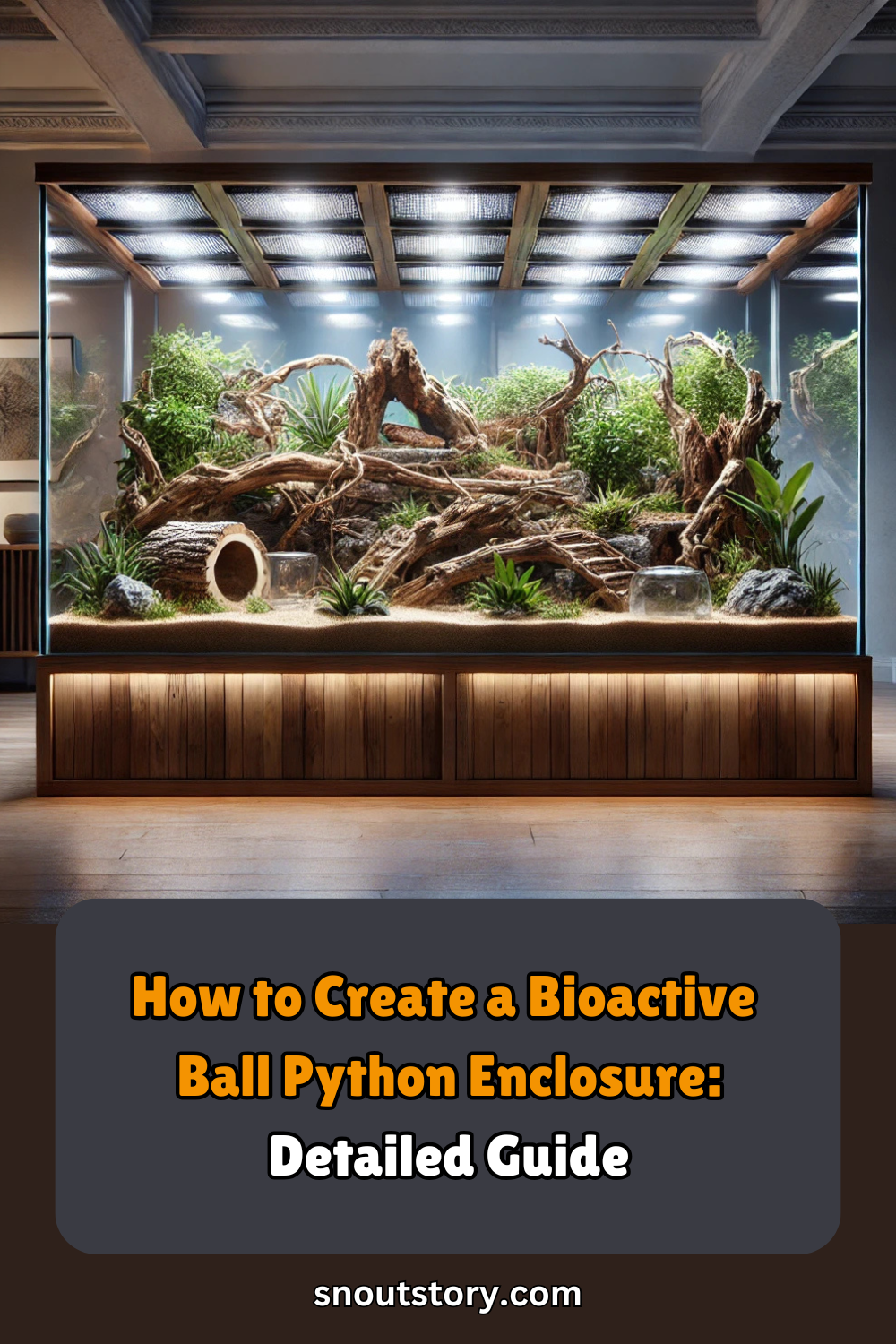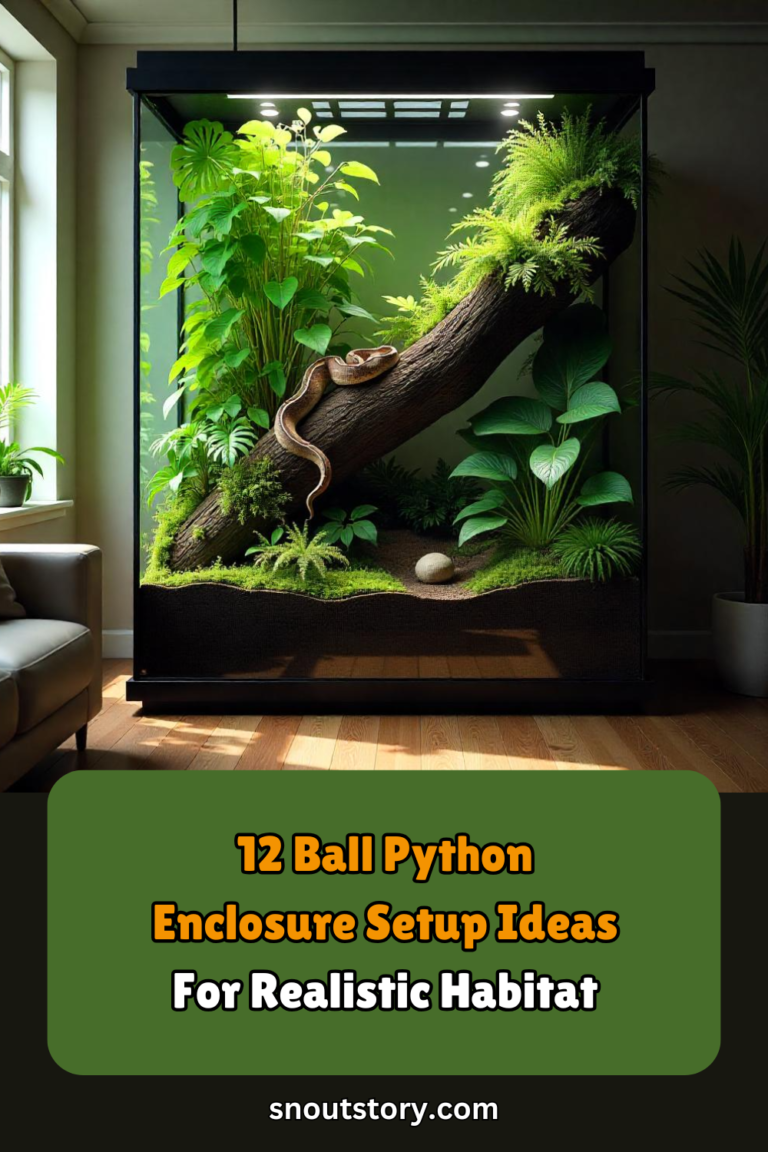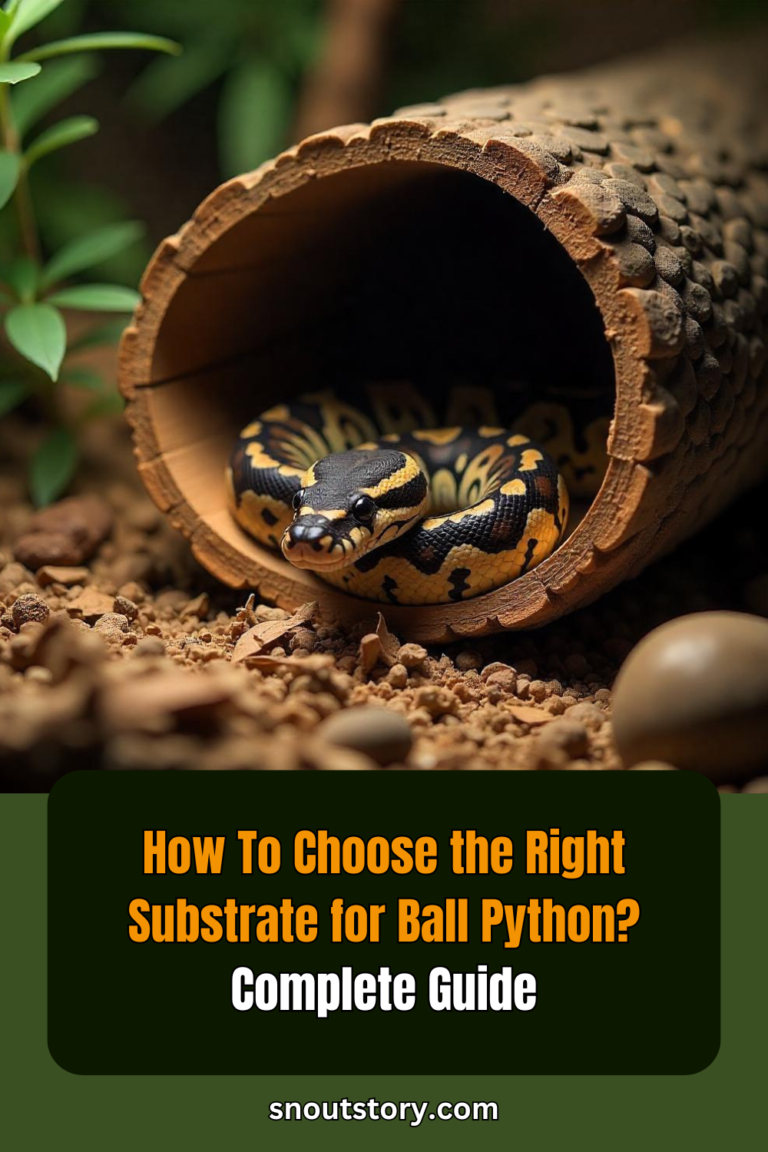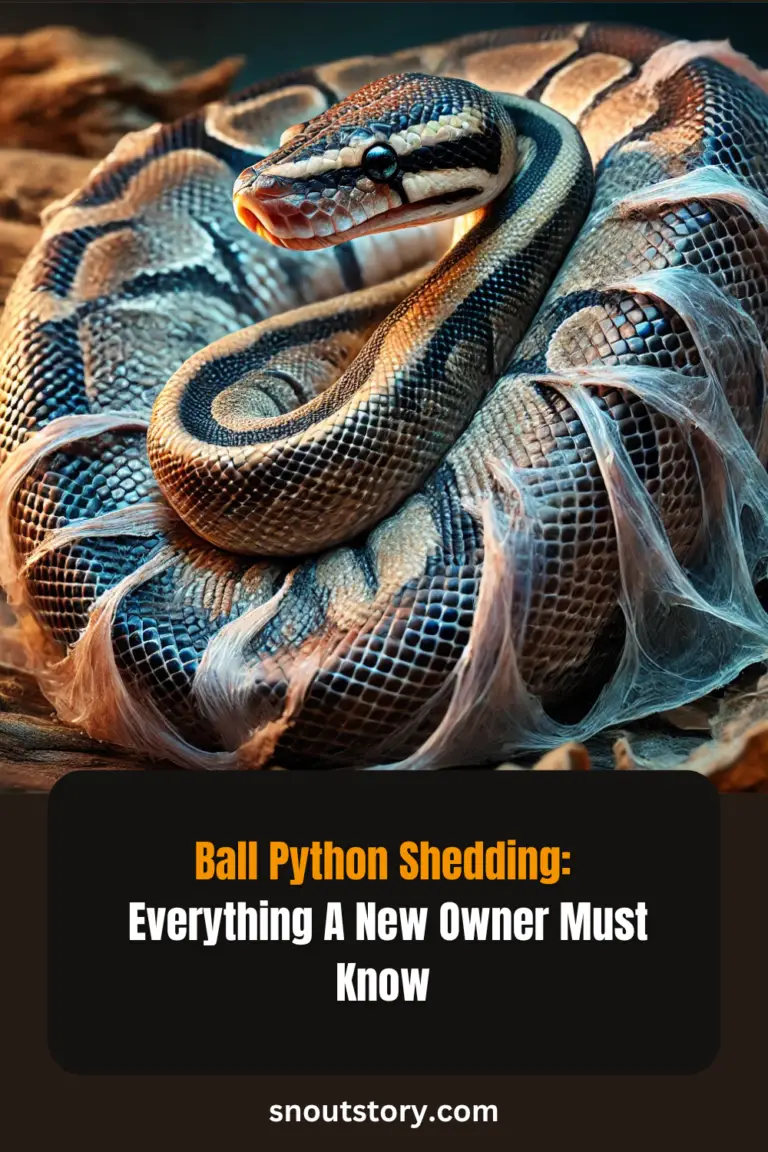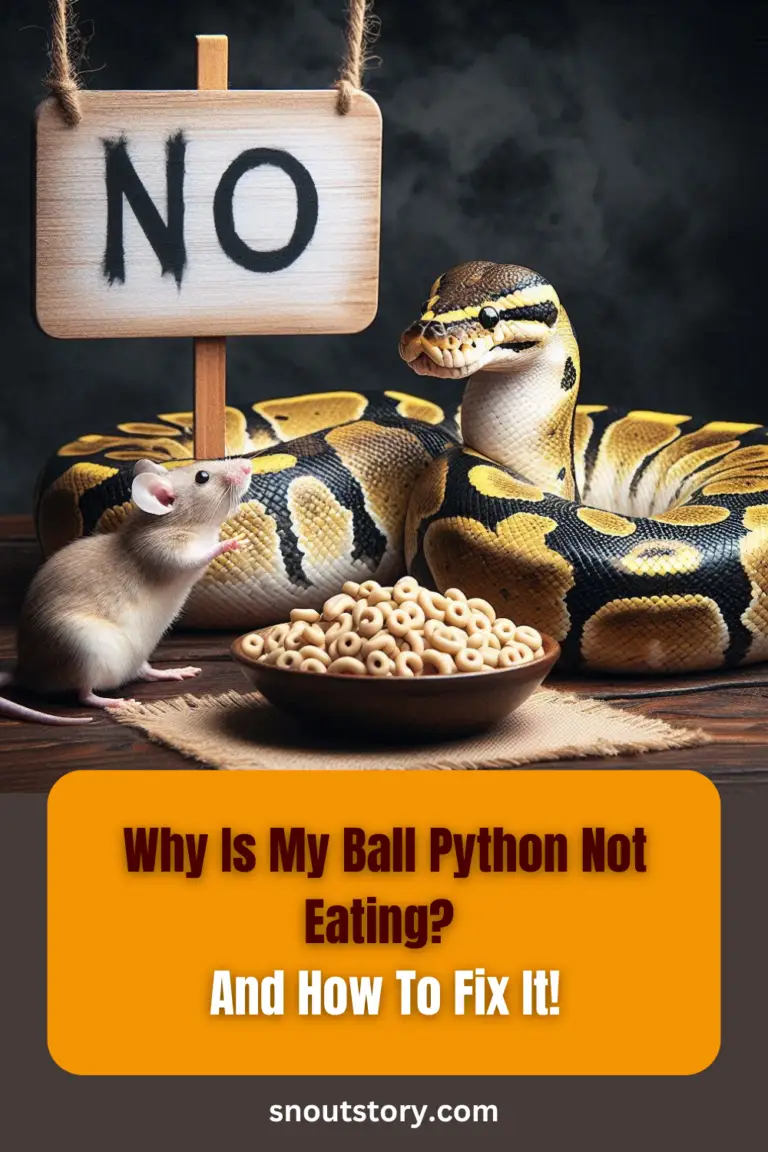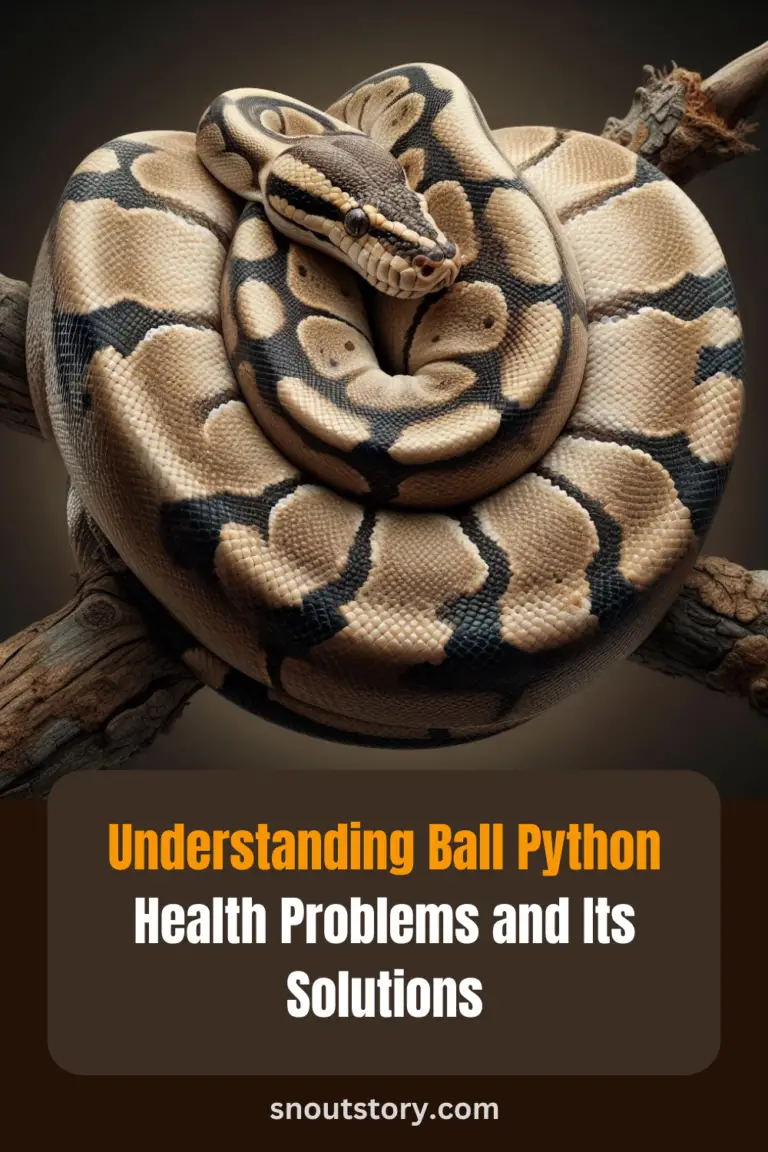Creating a bioactive ball python enclosure is one of the most rewarding ways to care for your snake while mimicking its natural environment. You’re not just building a home—you’re designing a living ecosystem that supports beneficial microbes, live plants, and a clean-up crew that handles waste naturally.
This setup keeps your ball python healthier and less stressed, with enrichment opportunities that static enclosures just don’t offer. Whether you’re upgrading an existing terrarium or starting fresh, understanding the key components—like layered substrates, humidity zones, and the right fauna—will set you up for long-term success.
If you are new to this blog, let me tell you, I always recommend our community with the best and affordable relevant products (Marked with Red Links) so that you can easily find the right things without wasting extra time. Let’s break down everything you need to build a sustainable, low-maintenance bioactive habitat your ball python will thrive.
Disclaimer
“This Blog is completely reader-supported, for any purchase you make from affiliate links on this blog we earn a small commission with no extra cost to you, which I use to feed my cute puppies 🥺”
Choosing the Right Enclosure for a Bioactive Setup
You want to start with the right enclosure because it sets the foundation for the entire bioactive setup. Go for a front-opening terrarium with solid ventilation and enough floor space to accommodate natural behaviors like burrowing and exploring.
Avoid tall, arboreal-style tanks—ball pythons are ground-dwellers and feel safest with low, horizontal layouts. Look for an enclosure made of PVC or glass with a secure locking system and the ability to hold consistent heat and humidity.
You’ll also want to ensure the bottom is deep enough to support at least 4 inches of substrate layers without sacrificing space for hides and enrichment. Getting this part right means you won’t constantly battle mold, stagnant air, or humidity crashes.
For Bioactive enclosures or in general for Ball Pythons, this is the best tank available in the market: REPTI ZOO 67-Gallon Reptile Large Terrarium Upgrade Glass Front Opening Tank Sliding Door with Screen Ventilation Reptile Terrarium About 48″ x 18″ x 18″

Essential Substrate Layers for Bioactive Environments
You’ll want to build your substrate in layers that support both your snake’s comfort and the enclosure’s ecosystem. Start with a drainage layer—something like LECA or hydroballs—to prevent water from pooling and causing root rot or fungal blooms.
Add a mesh barrier to keep the soil from mixing into that base. Your bioactive soil mix should sit on top of that; aim for a blend of organic topsoil, coconut fiber, and sphagnum moss to keep it loose, breathable, and moisture-retentive. That middle layer is key for plant roots and your cleanup crew to thrive.
A thin layer of leaf litter or reptile-safe bark on the surface gives your ball python places to hide and helps maintain natural humidity. Don’t skip the layers—each one serves a purpose in making the enclosure low-maintenance and biologically balanced.
Things You Need for Perfect Bioactive Substrate:
- Premium Live Oak Leaf Litter (Buy Now on Amazon)
- Sukh Sphagnum Moss for Reptiles (Buy Now on Amazon)
- Zoo Med Naturalistic Terrarium Mesh (Buy Now on Amazon)
- ReptiEarth Reptile Bedding, Fluffy Coconut Fiber Substrate (Buy Now on Amazon)
- Riare 10LBS Expanded Clay Balls Terrarium Substrate for Reptiles (Buy Now on Amazon)
Selecting Safe Live Plants for Ball Pythons
You want to pick plants that won’t just survive in a ball python enclosure but also won’t pose any risk to your snake. Focus on non-toxic, sturdy species that can handle moderate humidity and lower light levels.
Snake plants, pothos, and philodendrons are excellent choices—they’re resilient, low-maintenance, and provide natural cover without breaking under the snake’s weight. Avoid anything with sharp edges, sap, or known toxins, like aloe or dieffenbachia.
Think of your plants as part of the habitat, not just decoration—they contribute to air quality, moisture retention, and microclimate balance. Secure them well into the substrate so they don’t topple if your ball python decides to explore or burrow nearby.
Plants to Go With:
Incorporating Clean-Up Crew: Isopods and Springtails
You’ll want to introduce isopods and springtails early in your setup so they can establish themselves before your ball python moves in. These tiny critters are your bioactive janitors—they break down waste, uneaten food, and decaying plant matter, which helps maintain a cleaner, healthier environment without constant spot-cleaning.
Go for species like dwarf white isopods and temperate springtails; they’re hardy and thrive in the humid, stable conditions your enclosure will provide. Mix them into the drainage and substrate layers, and add a bit of leaf litter to give them cover and food from day one. Just be patient—they won’t fix things overnight, but once the population settles in, you’ll notice a big difference in how low-maintenance your enclosure becomes.
Here you go with the Cleaning Crew: Dwarf White & Springtail Bundle Live Isopods

Maintaining Proper Humidity and Temperature Balance
Your bioactive enclosure only works as intended if you’ve got the humidity and temperature fine-tuned to mimic a ball python’s natural rhythm. You’re aiming for consistency more than perfection—think 60–70% humidity with small spikes during shedding and a thermal gradient that gives your snake both a basking zone around 90°F and a cool-down spot near 78°F.
Use a digital hygrometer and thermometer with probes placed at ground level, not stuck up on glass. For heat, a thermostat-controlled under-tank heater or ceramic emitter gets the job done without drying the air.
Keep the substrate layered and moist at the bottom to retain humidity, and consider partially covering the screen top with acrylic or foil tape to cut down evaporation without blocking airflow. You’ll notice your clean-up crew thrives, too, making this a win across the board.
This is what you will need to Maintain Proper Humidity and Temperature:
- PAIZOO LED Digital Reptile Thermometer and Humidity Gauge Hygrometer (Buy Now on Amazon)
- Aiicioo Under Tank Heater Thermostat – Reptile Heating Pad (Buy Now on Amazon)
Lighting and Heating for Bioactive Enclosures
Getting your lighting and heating right in a bioactive ball python setup isn’t just about comfort—it’s what keeps the entire micro-ecosystem stable. You don’t need intense UVB like you would for a bearded dragon, but a low-output 5.0 UVB bulb can benefit your python’s circadian rhythm and encourage natural behavior without overwhelming it.
Position it above a mesh screen for gentle diffusion. For heat, skip heat lamps that dry the enclosure out. Go with an under-tank or a radiant heat panel connected to a thermostat. These offer steady warmth without throwing off humidity levels.
Place the heat source to one side only to create a proper gradient, and always double-check surface temps with an infrared temp gun—ball pythons are ground dwellers, so belly heat is more important than ambient air.
The UVB light I have recommended here is not only perfect for Ball Pythons but also energy efficient, which means sustainable pet keeping!!!
UVB Reptile Light 5.0, 13W Tropical and Sub-Tropical UVA UVB Bulb for Reptiles (Buy Now on Amazon)
Natural Hides and Climbing Elements for Enrichment

You’d be surprised how much your ball python benefits from something as simple as a well-placed cork log or driftwood branch. A bioactive enclosure isn’t complete without natural hides that provide security and textured surfaces that allow for climbing and gentle exploration.
Ball pythons may not be arboreal, but they still enjoy low, sturdy features that let them elevate slightly or wedge themselves between. Think cork flats, grapevine wood, and hollowed bark tunnels—not plastic hides that scream artificial. Rotate or shift elements occasionally to spark curiosity.
For hides, make sure they’re snug—tight spaces help them feel safe. Aim for two solid hides (one on the warm side, one on the cool), and enrich the rest of the space with branches, vines, and leaf litter to mimic natural cover.
Also Read: 12 Ball Python Enclosure Setup Ideas For Realistic Habitat
Here’s all you will Need for Perfect Natural Hides:
- Stone Cave Hide (Buy Now on Amazon)
- Hollow Log Hideout (Buy Now on Amazon)
Long-Term Maintenance and Monitoring Tips
Keeping a bioactive enclosure thriving long-term means getting into a rhythm that works for both you and your snake. Spot-checking waste daily, trimming overgrown plants weekly, and topping off the leaf litter every few months will keep things visually appealing and functionally balanced.
You’ll want to watch how your clean-up crew is doing—if your isopod or springtail population dips, it’s usually a humidity or food issue. Keep a digital hygrometer and thermometer in both warm and cool zones, and glance at them as often as you check your phone.
It’s smart to replace substrate layers annually, even if everything looks fine on the surface—it helps prevent compaction and nutrient imbalance. Make minor changes gradually so your ball python doesn’t stress from sudden habitat shifts.
Summary
Creating a bioactive ball python enclosure isn’t just about aesthetics—it’s about building a self-sustaining habitat that promotes your snake’s natural behaviors and long-term health. From choosing the right enclosure and layering the substrate correctly to selecting safe live plants and introducing an efficient clean-up crew, each step plays a role in creating balance.
By maintaining stable humidity and temperature levels, providing proper lighting and heating, and enriching the space with hides and climbing elements, you set the stage for a thriving mini-ecosystem. With routine monitoring and low-maintenance upkeep, your ball python will benefit from an environment that mirrors the wild—both visually and functionally.
If you found our content helpful and valuable, you can support us by making any of your purchases (even products other than those recommended in the blog) from our affiliate links (Ofc with no extra cost to you😉).
Recommended
12 Ball Python Enclosure Setup Ideas For Realistic Habitat
How To Choose the Right Substrate for Ball Python? Complete Guide
Ball Python Shedding: Everything A New Owner Must Know
Why Is My Ball Python Not Eating? And How To Fix It!
How To Breed Ball Python – A Comprehensive Guide
Understanding Ball Python Health Problems And It’s Solutions
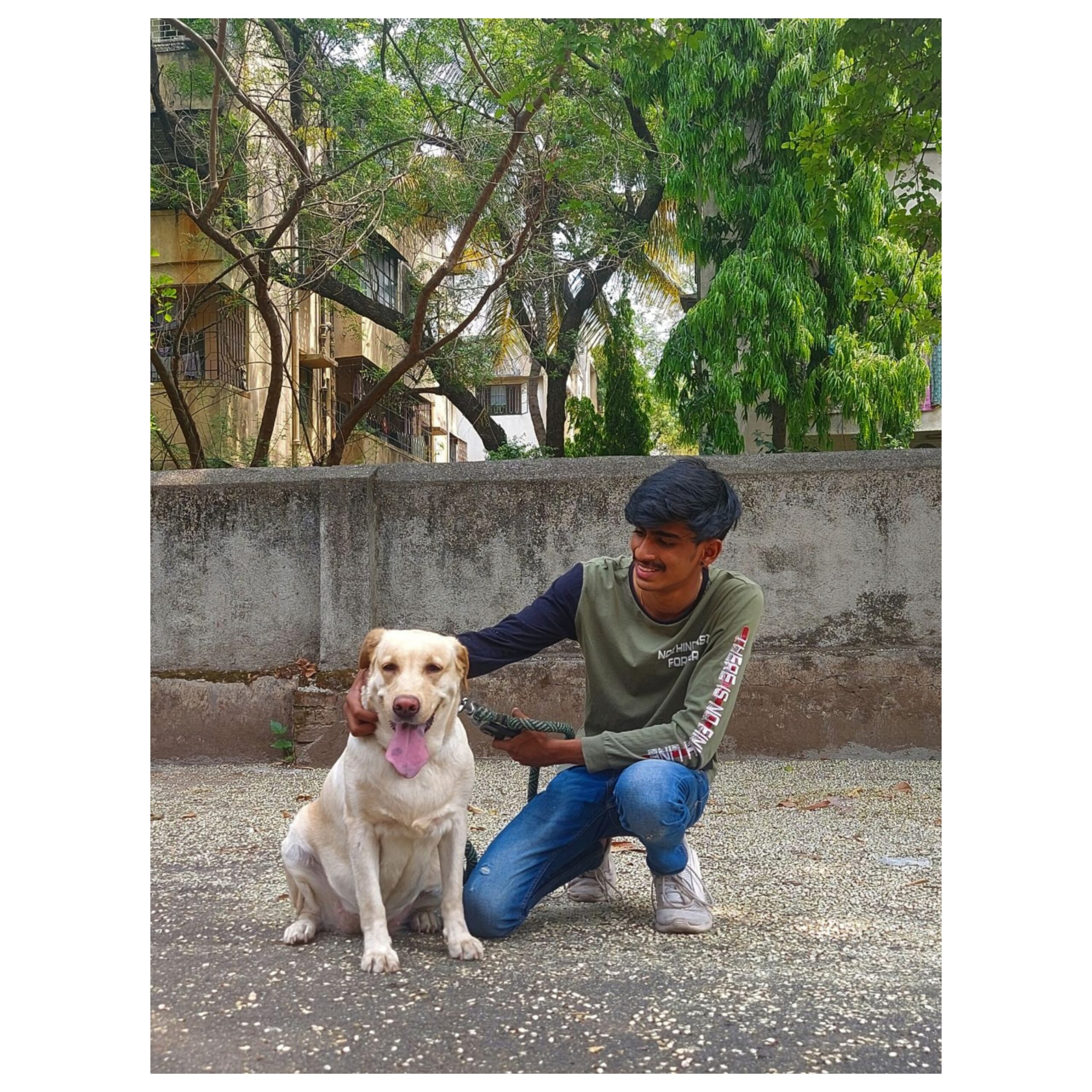
Vedant Narvekar is an experienced digital marketing expert with a profound love for nature and animals. With a career rooted in leveraging online platforms to drive engagement and promote meaningful causes, Vedant’s passion for animals inspired him to start Snout Story—a blog dedicated to educating people about pet keeping and sharing proper knowledge about caring for animals. Drawing on his expertise in digital marketing, Vedant utilizes his platform to advocate for responsible pet ownership, providing valuable insights on pet care, training, nutrition, and more. Through Snout Story, Vedant aims to empower pet lovers with the information they need to provide the best possible care for their furry companions, while also fostering a deeper appreciation for the natural world and the creatures that inhabit it.

